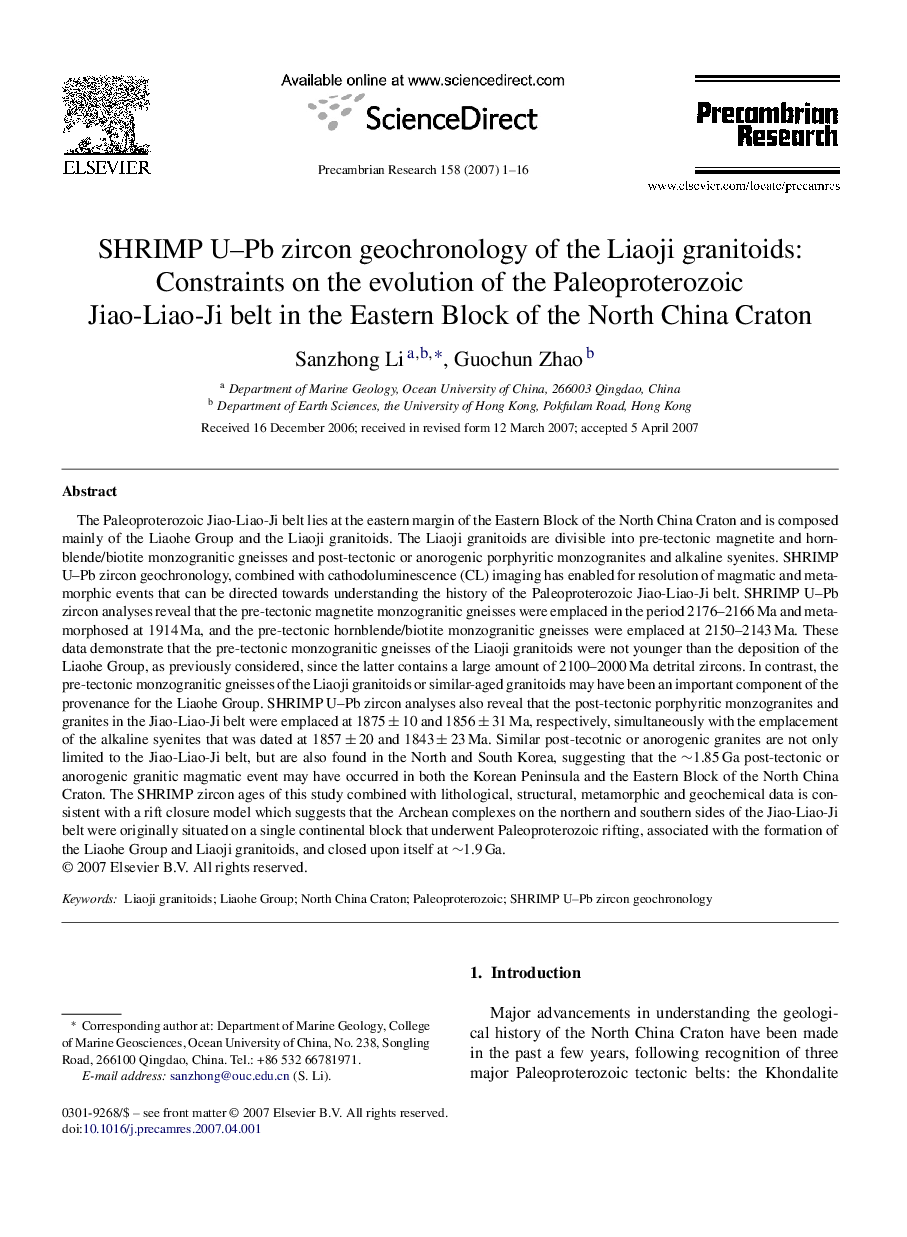| کد مقاله | کد نشریه | سال انتشار | مقاله انگلیسی | نسخه تمام متن |
|---|---|---|---|---|
| 4724467 | 1639714 | 2007 | 16 صفحه PDF | دانلود رایگان |

The Paleoproterozoic Jiao-Liao-Ji belt lies at the eastern margin of the Eastern Block of the North China Craton and is composed mainly of the Liaohe Group and the Liaoji granitoids. The Liaoji granitoids are divisible into pre-tectonic magnetite and hornblende/biotite monzogranitic gneisses and post-tectonic or anorogenic porphyritic monzogranites and alkaline syenites. SHRIMP U–Pb zircon geochronology, combined with cathodoluminescence (CL) imaging has enabled for resolution of magmatic and metamorphic events that can be directed towards understanding the history of the Paleoproterozoic Jiao-Liao-Ji belt. SHRIMP U–Pb zircon analyses reveal that the pre-tectonic magnetite monzogranitic gneisses were emplaced in the period 2176–2166 Ma and metamorphosed at 1914 Ma, and the pre-tectonic hornblende/biotite monzogranitic gneisses were emplaced at 2150–2143 Ma. These data demonstrate that the pre-tectonic monzogranitic gneisses of the Liaoji granitoids were not younger than the deposition of the Liaohe Group, as previously considered, since the latter contains a large amount of 2100–2000 Ma detrital zircons. In contrast, the pre-tectonic monzogranitic gneisses of the Liaoji granitoids or similar-aged granitoids may have been an important component of the provenance for the Liaohe Group. SHRIMP U–Pb zircon analyses also reveal that the post-tectonic porphyritic monzogranites and granites in the Jiao-Liao-Ji belt were emplaced at 1875 ± 10 and 1856 ± 31 Ma, respectively, simultaneously with the emplacement of the alkaline syenites that was dated at 1857 ± 20 and 1843 ± 23 Ma. Similar post-tecotnic or anorogenic granites are not only limited to the Jiao-Liao-Ji belt, but are also found in the North and South Korea, suggesting that the ∼1.85 Ga post-tectonic or anorogenic granitic magmatic event may have occurred in both the Korean Peninsula and the Eastern Block of the North China Craton. The SHRIMP zircon ages of this study combined with lithological, structural, metamorphic and geochemical data is consistent with a rift closure model which suggests that the Archean complexes on the northern and southern sides of the Jiao-Liao-Ji belt were originally situated on a single continental block that underwent Paleoproterozoic rifting, associated with the formation of the Liaohe Group and Liaoji granitoids, and closed upon itself at ∼1.9 Ga.
Journal: Precambrian Research - Volume 158, Issues 1–2, 15 September 2007, Pages 1–16